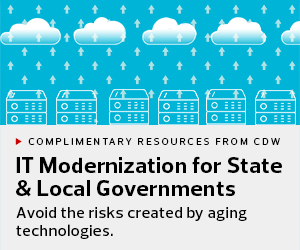This summer, Montana is expected to retire a mainframe that has supported state agencies for decades. The state moved remaining applications to the cloud to finally discontinue use of the mainframe.
Montana’s freedom from its mainframe is somewhat rare among states. Many state governments still rely upon aging mainframes for citizen services. Mainframes are deeply embedded in many government functions ranging from motor vehicle registration and Medicaid eligibility to tax assessments. Mainframes are even more pervasive than they may first appear: Nearly a quarter of state CIOs polled by the National Association of State Chief Information Officers indicated in a 2020 survey that they still provided local governments with mainframe support.
Advances in technology and changing economic models have made transitioning to cloud services a compelling proposition, granting government agencies with advantages in cost, flexibility, and application maintenance and development. States also have found it challenging to identify new job candidates with mainframe expertise.
FREE RESOURCES: Get the tools you need to modernize your IT infrastructure.
Cloud Enables Agencies to Better Manage Expenditures
In 2020, many states expanded their remote workforces, investing in cloud-based tools to enable collaboration. Every state and local government now has some experience with this sort of development, which illustrates the benefits of treating IT spending as an operating expense instead of a capital expense. States traditionally have treated data center development as a capital expense: Agencies make a large investment to refresh technology.
However, a shift to cloud computing may grant agencies more finely tuned control over IT expenditures. The recurring monthly charges for cloud services fall under operating expenses, the normal costs of doing business. Governments can scale cloud services up or down as required should employee support or citizen services demand it.
By contracting a partner for private or hybrid cloud solutions, agencies also can take advantage of the latest solutions and enhance cybersecurity through services that receive upgrades when new innovations are available. Mainframes, by contrast, will become increasingly difficult to maintain and protect as skills and parts become more rare.
RELATED: Explore the technology and approaches needed to quickly enable digital government.
Mainframes Are Increasingly Difficult to Maintain
New Jersey grabbed headlines last year when it sought to recruit COBOL programmers to support its IT systems, which were struggling to process a wave of unemployment benefits applications. Many mainframes rely on the outdated COBOL language, making it difficult to identify new job candidates who can maintain them. Moreover, those who possess such skills likely have retired or are nearing retirement age, further shrinking the available mainframe support workforce.
Salary limitations and a lack of qualified applicants already pose challenges for public sector IT agencies. Mainframe maintenance adds another obstacle for already struggling governments. Some agencies have eyed an expansion of remote work opportunities as a means to recruit qualified IT expertise outside of government seats, but COBOL programmers and mainframe experts remain members of a diminishing pool.
Meanwhile, only 16 states have fully modernized their unemployment systems, according to a report by Government Technology.
Infrastructure as a Service Provides Flexibility
Prior to the past year, Montana had narrowed the number of applications running on its mainframe to three. Two of these were in use by the Montana Department of Public Health and Human Services, which re-created the programs to work with modern systems.
The state’s retiring mainframe was made by IBM, which has championed Mainframe as a Service, ultimately an Infrastructure as a Service offering. MaaS offers state governments continuity of service with the advantages of moving a legacy capital expense to an operating expense — state-of-the-art infrastructure with scalability. It ensures qualified IT talent will remain available.











